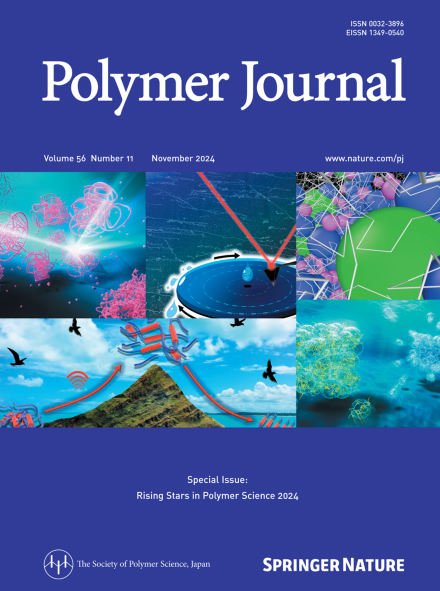表征具有结构异质性的聚合物体系中分子尺度载荷传递的计算方法
IF 2.7
4区 化学
Q3 POLYMER SCIENCE
引用次数: 0
摘要
当代高分子物理学强调高分子材料的设计,利用纳米和微尺度的结构来预测和优化材料的性能。尽管它们很重要,但由于聚合物分子链的不同构型,预测聚合物的机械行为仍然具有挑战性。近年来,基于分子动力学(MD)模拟的定量结构-性质关系建模变得越来越重要。MD模拟擅长于解析亚10纳米尺度的形态特征,提供对网络拓扑、化学构象和分子过渡的关键见解。本文综述了最近的MD模拟研究,这些研究主要集中在聚合物的亚连续体非均质性方面,从力学性能的角度进行研究。回顾了合理分配应力张量到单个分子组分的理论框架,总结了该方法取得的主要成果。本文综述了近年来从聚合物力学性能角度研究亚连续介质非均质性的MD模拟研究。回顾了合理分配应力张量到单个分子组分的理论框架,总结了该方法取得的主要成果。本文章由计算机程序翻译,如有差异,请以英文原文为准。

A computational method for characterizing molecular-scale load transfer in polymer systems with structural heterogeneity
Contemporary polymer physics emphasizes polymer material design, which uses nano- and microscale structures to predict and optimize material properties. Despite their importance, predicting the mechanical behavior of polymers remains challenging because of the diverse configurations of their molecular chains. In recent years, quantitative structure‒property relationship modeling based on molecular dynamics (MD) simulations has become increasingly important. MD simulations excel at resolving sub-10-nm-scale morphological features, providing critical insights into network topology, chemical conformation, and molecular transitions. This review highlights recent MD simulation studies that have focused on subcontinuum heterogeneities in polymers from the perspective of their mechanical properties. The theoretical framework for rationally distributing the stress tensor to individual molecular components is revisited, and the key achievements made via this approach are summarized. This review highlights recent MD simulation studies focusing on subcontinuum heterogeneities in polymers from the perspective of their mechanical properties. The theoretical framework for rationally distributing the stress tensor to individual molecular components is revisited, and the key achievements made via this approach are summarized.
求助全文
通过发布文献求助,成功后即可免费获取论文全文。
去求助
来源期刊

Polymer Journal
化学-高分子科学
CiteScore
5.60
自引率
7.10%
发文量
131
审稿时长
2.5 months
期刊介绍:
Polymer Journal promotes research from all aspects of polymer science from anywhere in the world and aims to provide an integrated platform for scientific communication that assists the advancement of polymer science and related fields. The journal publishes Original Articles, Notes, Short Communications and Reviews.
Subject areas and topics of particular interest within the journal''s scope include, but are not limited to, those listed below:
Polymer synthesis and reactions
Polymer structures
Physical properties of polymers
Polymer surface and interfaces
Functional polymers
Supramolecular polymers
Self-assembled materials
Biopolymers and bio-related polymer materials
Polymer engineering.
 求助内容:
求助内容: 应助结果提醒方式:
应助结果提醒方式:


